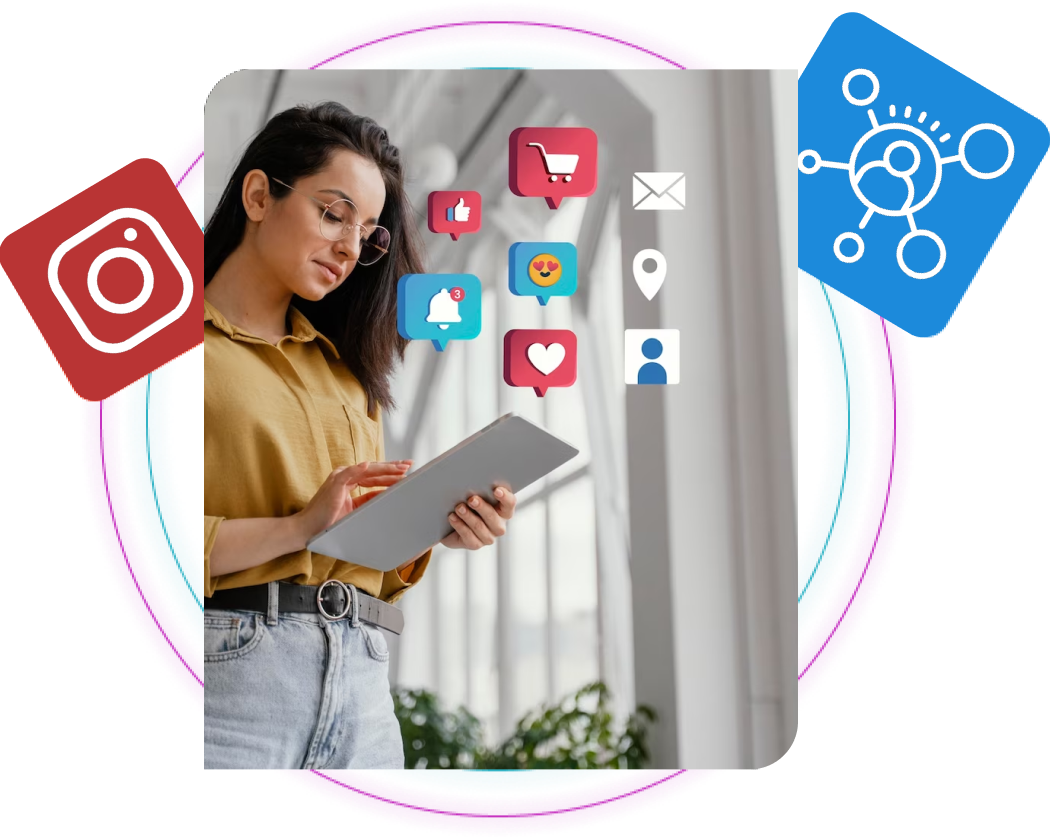In today’s digital age, mobile apps have become an integral part of our daily lives. From social networking to productivity tools, there seems to be an app for everything. However, not all apps are created equal. Some apps have the power to capture our attention, engage us consistently, and become a part of our routines. During These are habit-forming apps, and they hold valuable insights for Mobile App Developers looking to create impactful and successful applications.
Understanding App Insights:
Moreover To build habit-forming apps, developers must delve deep into app insights – understanding user behaviors, preferences, and motivations. This involves leveraging data analytics tools to track user interactions, monitor app usage patterns, and identify opportunities for improvement. By gaining insights into user engagement metrics, developers can refine their app design, features, and content to better align with user needs and preferences.
Additionally studies have shown that user engagement is a critical factor in the success of mobile apps. Apps that effectively engage users are more likely to be habit-forming, leading to increased retention and user loyalty. By tracking metrics such as session duration, frequency of use, and user retention rates, developers can gauge the level of user engagement and identify areas for improvement.
Moreover, user feedback plays a crucial role in shaping app development strategies. Conducting user surveys, feedback sessions, and A/B testing can provide valuable insights into user preferences, pain points, and feature requests. By actively soliciting and listening to user feedback, developers can gain a deeper understanding of user needs and tailor their app design and features accordingly.
Additionally, segmentation analysis can help developers identify different user segments based on demographics, behavior, and usage patterns. By segmenting users into distinct groups, developers can personalize the app experience and deliver targeted content and features to meet the specific needs of each segment.
Furthermore, competitive analysis can provide valuable insights into industry trends, competitor strategies, and emerging technologies. By studying competitors’ apps and market trends, developers can identify gaps in the market and opportunities for innovation.
Harnessing App Design Software:
App design software plays a crucial role in the development of habit-forming apps. These tools enable developers to create intuitive user interfaces, visually appealing designs, and seamless user experiences. By utilizing app design software, developers can iterate quickly, prototype ideas, and test user interactions to optimize app usability and engagement.
One of the primary principles of app design is simplicity. Effective app design software should enable developers to create clean and uncluttered interfaces that prioritize ease of use and clarity of information. By focusing on simplicity, developers can ensure that users can navigate the app effortlessly, leading to increased engagement and retention.
Another crucial principle is consistency. App design software should provide tools for maintaining consistency across different screens and elements within the app. Consistent design patterns and visual cues help users understand how to interact with the app, reducing cognitive load and enhancing usability.
Furthermore, visual hierarchy is essential in guiding users’ attention and prioritizing important information within the app. App design software should offer features for defining hierarchy through typography, color, and layout, ensuring that users can quickly identify key elements and actions.
Moreover, responsiveness is paramount in today’s mobile landscape, where users access apps across various devices and screen sizes. App design software should enable developers to create responsive designs that adapt seamlessly to different screen resolutions and orientations, providing a consistent user experience across devices.
Lastly, accessibility is a fundamental principle of app design that ensures inclusivity and usability for all users, including those with disabilities. App design software should offer tools for incorporating accessibility features such as alternative text for images, adjustable font sizes, and keyboard navigation, ensuring that the app is accessible to a diverse range of users.
Leveraging Mobile App Development Software:
Mobile app development software streamlines the app development process, allowing developers to build, deploy, and manage apps more efficiently. These tools provide frameworks, libraries, and resources to expedite development and ensure cross-platform compatibility. By leveraging mobile app development software, developers can focus on crafting engaging app experiences while reducing time-to-market and development costs.
For example, how a mobile app development software like Xamarin can be leveraged to create a cross-platform app for a fictional e-commerce company called “Shopify Emporium.”
Shopify Emporium wants to develop a mobile app that allows customers to browse products, make purchases, and track their orders seamlessly across iOS and Android devices. They decided to use Xamarin as their mobile app development software due to its reputation for streamlining cross-platform development.
Here’s how Xamarin helps in the development process:
- Code Reusability: With Xamarin, developers can write code once using C# and share it across multiple platforms. This means that instead of developing separate codebases for iOS and Android, developers can write a single codebase that works across both platforms, saving time and effort.
- Native User Interfaces: Xamarin allows developers to create native user interfaces using platform-specific UI controls. This ensures that the app looks and feels native on each platform, providing a consistent and intuitive user experience.
- Access to Native APIs: Xamarin provides access to a wide range of native APIs and features, allowing developers to incorporate platform-specific functionality into their app. For example, in addition, developers can integrate Apple Pay on iOS and Google Pay on Android seamlessly.
- Testing and Debugging: Xamarin includes powerful debugging and testing tools that help developers identify and fix issues quickly. Developers can test their app on real devices or emulators, ensuring that it performs flawlessly on both iOS and Android.
- Third-Party Libraries and Plugins: Xamarin has a vast ecosystem of third-party libraries and plugins that extend its functionality. Additionally, developers can use plugins for social media integration, analytics, and push notifications to enhance their app’s features.

Generating Innovative App Design Ideas:
Successful habit-forming apps are built on innovative app design ideas that capture user attention and inspire engagement. This involves brainstorming creative concepts, exploring new features, and staying abreast of industry trends. By thinking outside the box and pushing the boundaries of conventional app design, developers can create apps that stand out in a crowded marketplace and resonate with users on a deeper level.
Example:
Headspace: Headspace, a meditation and mindfulness app, is an excellent example of innovative app design. The app combines sleek design with engaging content to create a calming and immersive user experience. Headspace offers a variety of guided meditations, sleep sounds, and mindfulness exercises tailored to different user needs and preferences.
Additionally, through innovative features such as daily meditation reminders, progress tracking, and personalized recommendations, Headspace encourages users to cultivate healthy habits and prioritize self-care in their daily lives.
By embracing innovative app design ideas and leveraging emerging trends in mental wellness, Headspace has become a leading app in its category, resonating with millions of users worldwide.
Partnering with Mobile App Development Services:
Partnering with mobile app development services involves a collaborative process between businesses and specialized agencies or companies that offer expertise in mobile app development. Here’s how these services are typically carried out:
Requirement Gathering:
The process begins with an in-depth discussion between the business stakeholders and the app development team to gather requirements. This involves understanding the business objectives, target audience, features, functionalities, and any specific preferences or constraints.
Concept Ideation:
Based on the gathered requirements, the app development team collaborates with the business to brainstorm app ideas and conceptualize the app’s features, user interface, and user experience. This phase may involve wireframing, prototyping, and creating mockups to visualize the app concept.
Design and Development:
Furthermore, once the app concept is finalized, the development team proceeds to design and develop the app. This involves creating the user interface (UI) and user experience (UX) design, coding the app functionalities, and integrating backend systems if required. Throughout the process, the development team adheres to industry best practices and standards to ensure the app’s quality and performance.
Testing and Quality Assurance:
After the app is developed, it undergoes rigorous testing to identify and fix any bugs, errors, or usability issues. This may involve functional testing, performance testing, security testing, and user acceptance testing to ensure that the app meets the desired standards of quality and reliability.
Deployment and Launch:
Once the app passes the testing phase, it is then prepared for deployment to the relevant app stores, such as the Apple App Store and Google Play Store. The development team assists with the app submission process, including preparing app store listings, metadata, and assets. Upon approval, the app is launched to the public.
Post-launch Support and Maintenance:
Even after the app is launched, the development services continue to provide ongoing support and maintenance. This may include monitoring app performance, addressing user feedback, releasing updates and patches, and providing technical assistance as needed. The goal is to ensure the app remains functional, secure, and optimized for the best possible user experience.
Insightful Examples:
- Insight for Living App: This app provides daily inspirational content and personalized recommendations to users, encouraging daily engagement and fostering a sense of community.
- Duolingo: With its gamified language learning approach, Duolingo motivates users to practice consistently and progress through language levels, turning language learning into a habit.
- Fitbit: By tracking users’ activity levels, sleep patterns, and fitness goals, Fitbit encourages healthy habits and motivates users to stay active and achieve their fitness objectives.
Conclusion:
Moreover, the landscape of mobile app development is continually evolving, driven by a quest to create apps that not only captivate users but also become integral parts of their daily routines.
To achieve this, developers must leverage a combination of insightful strategies, innovative design principles, and collaborative partnerships. Additionally, Understanding app insights, such as user behaviors and preferences, is paramount in crafting habit-forming apps.
By analyzing user engagement metrics, soliciting feedback, conducting segmentation analysis, and staying attuned to industry trends, developers can refine their apps to better meet user needs and expectations.
Additionally, Further, App design software plays a crucial role in translating these insights into intuitive user interfaces and seamless experiences. Moreover, prioritizing simplicity, consistency, visual hierarchy, responsiveness, and accessibility ensures that apps are not only visually appealing but also easy to use across various devices and for diverse user demographics.
Additionally, mobile app development software, like Xamarin, streamlines the development process. This enables developers to create cross-platform apps efficiently. Consequently, they can maintain native user experiences and access platform-specific features.
Basically Generating innovative app design ideas is essential for standing out in a competitive market. By brainstorming creative concepts, exploring new features, and staying abreast of emerging trends, developers can create apps that resonate with users and inspire engagement. Finally, partnering with mobile app development services facilitates a collaborative approach to app development, from requirement gathering and concept ideation to design, development, testing, deployment, and post-launch support.
By working closely with specialized agencies, businesses can bring their app ideas to life and ensure ongoing success in the dynamic world of mobile apps.





















































